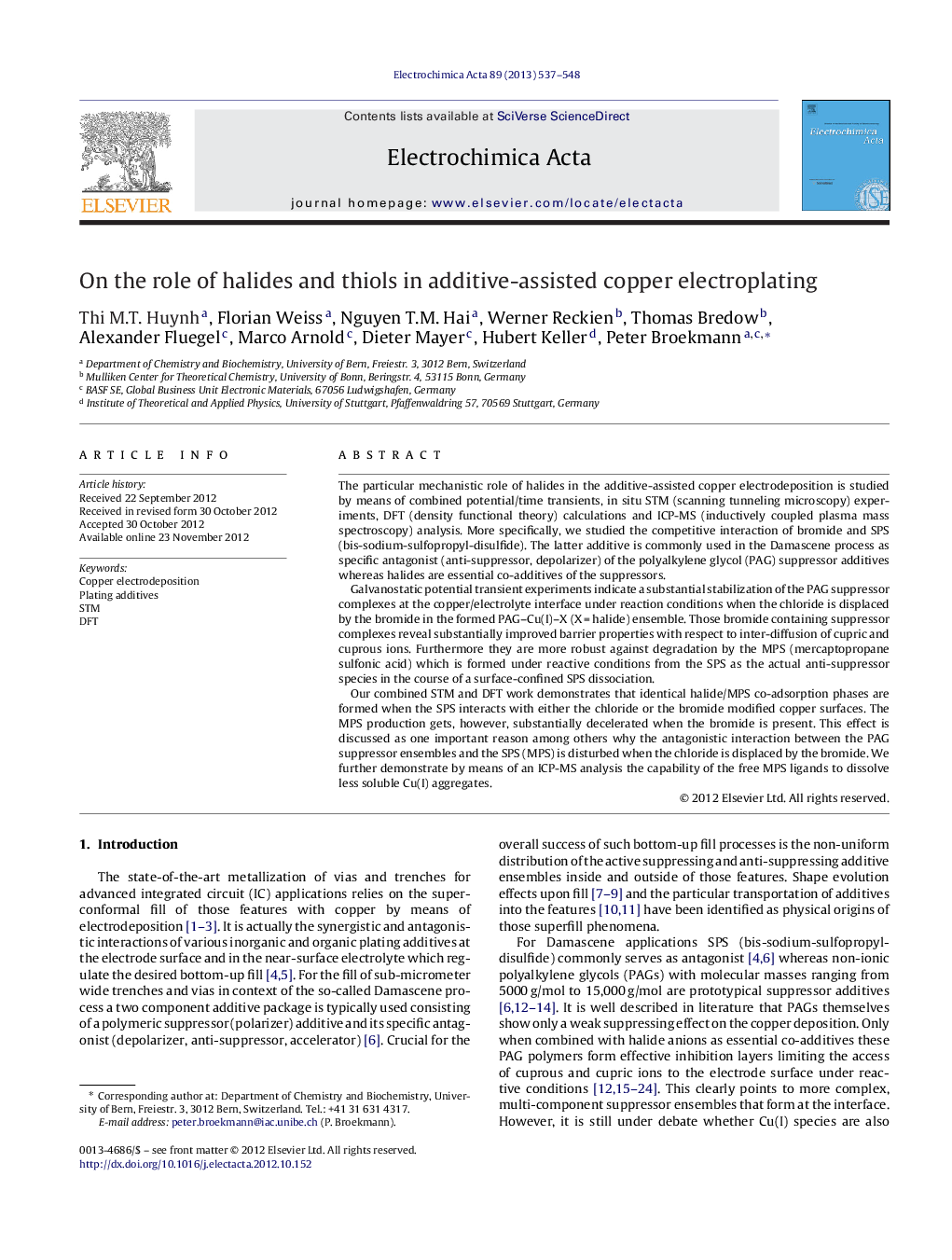| کد مقاله | کد نشریه | سال انتشار | مقاله انگلیسی | نسخه تمام متن |
|---|---|---|---|---|
| 187634 | 459646 | 2013 | 12 صفحه PDF | دانلود رایگان |

The particular mechanistic role of halides in the additive-assisted copper electrodeposition is studied by means of combined potential/time transients, in situ STM (scanning tunneling microscopy) experiments, DFT (density functional theory) calculations and ICP-MS (inductively coupled plasma mass spectroscopy) analysis. More specifically, we studied the competitive interaction of bromide and SPS (bis-sodium-sulfopropyl-disulfide). The latter additive is commonly used in the Damascene process as specific antagonist (anti-suppressor, depolarizer) of the polyalkylene glycol (PAG) suppressor additives whereas halides are essential co-additives of the suppressors.Galvanostatic potential transient experiments indicate a substantial stabilization of the PAG suppressor complexes at the copper/electrolyte interface under reaction conditions when the chloride is displaced by the bromide in the formed PAG–Cu(I)–X (X = halide) ensemble. Those bromide containing suppressor complexes reveal substantially improved barrier properties with respect to inter-diffusion of cupric and cuprous ions. Furthermore they are more robust against degradation by the MPS (mercaptopropane sulfonic acid) which is formed under reactive conditions from the SPS as the actual anti-suppressor species in the course of a surface-confined SPS dissociation.Our combined STM and DFT work demonstrates that identical halide/MPS co-adsorption phases are formed when the SPS interacts with either the chloride or the bromide modified copper surfaces. The MPS production gets, however, substantially decelerated when the bromide is present. This effect is discussed as one important reason among others why the antagonistic interaction between the PAG suppressor ensembles and the SPS (MPS) is disturbed when the chloride is displaced by the bromide. We further demonstrate by means of an ICP-MS analysis the capability of the free MPS ligands to dissolve less soluble Cu(I) aggregates.
► We study the synergistic and antagonistic interactions among halides, SPS and suppressor additives relevant for Damascene copper electroplating.
► The presence bromide in the interfacial suppressor ensemble leads to a significant improvement of the barrier properties for inter-diffusion of cupric ions.
► The SPS mediated degradation of the suppressor ensemble is decelerated by the bromide due to an increased kinetic hindrance of the surface-confined MPS production.
Journal: Electrochimica Acta - Volume 89, 1 February 2013, Pages 537–548